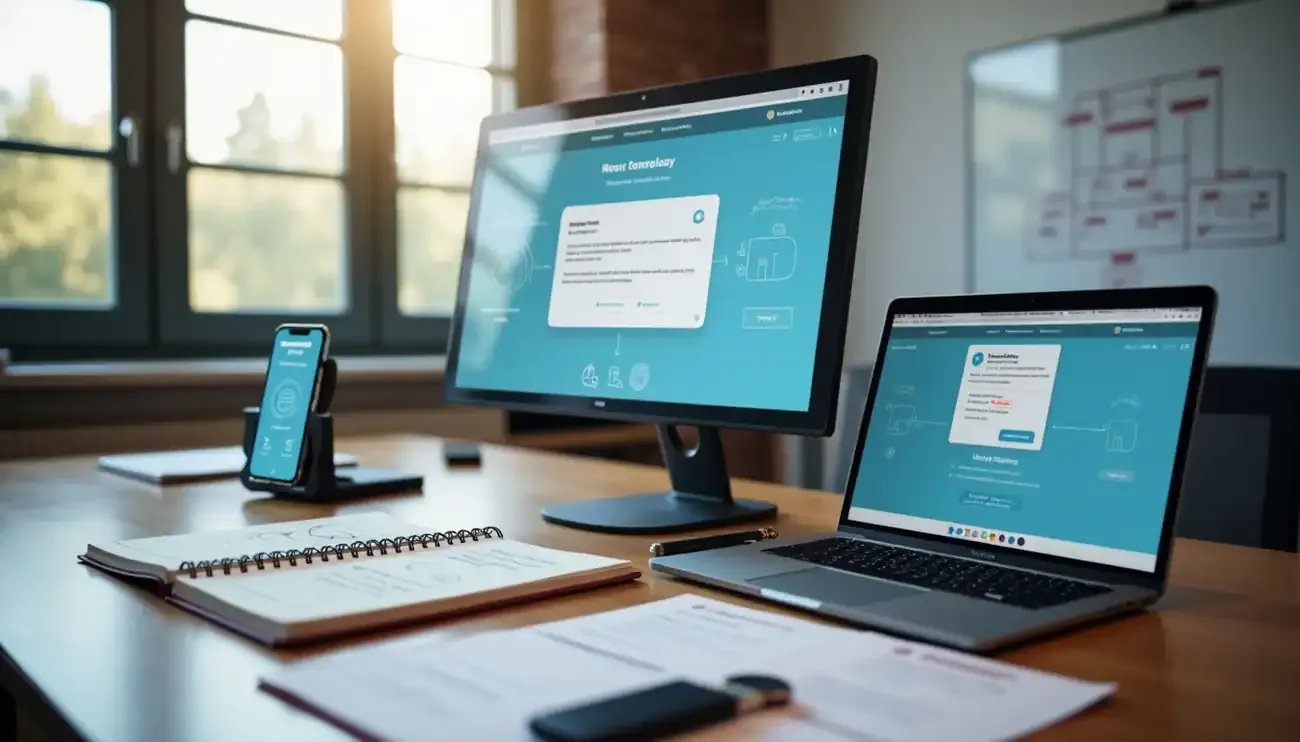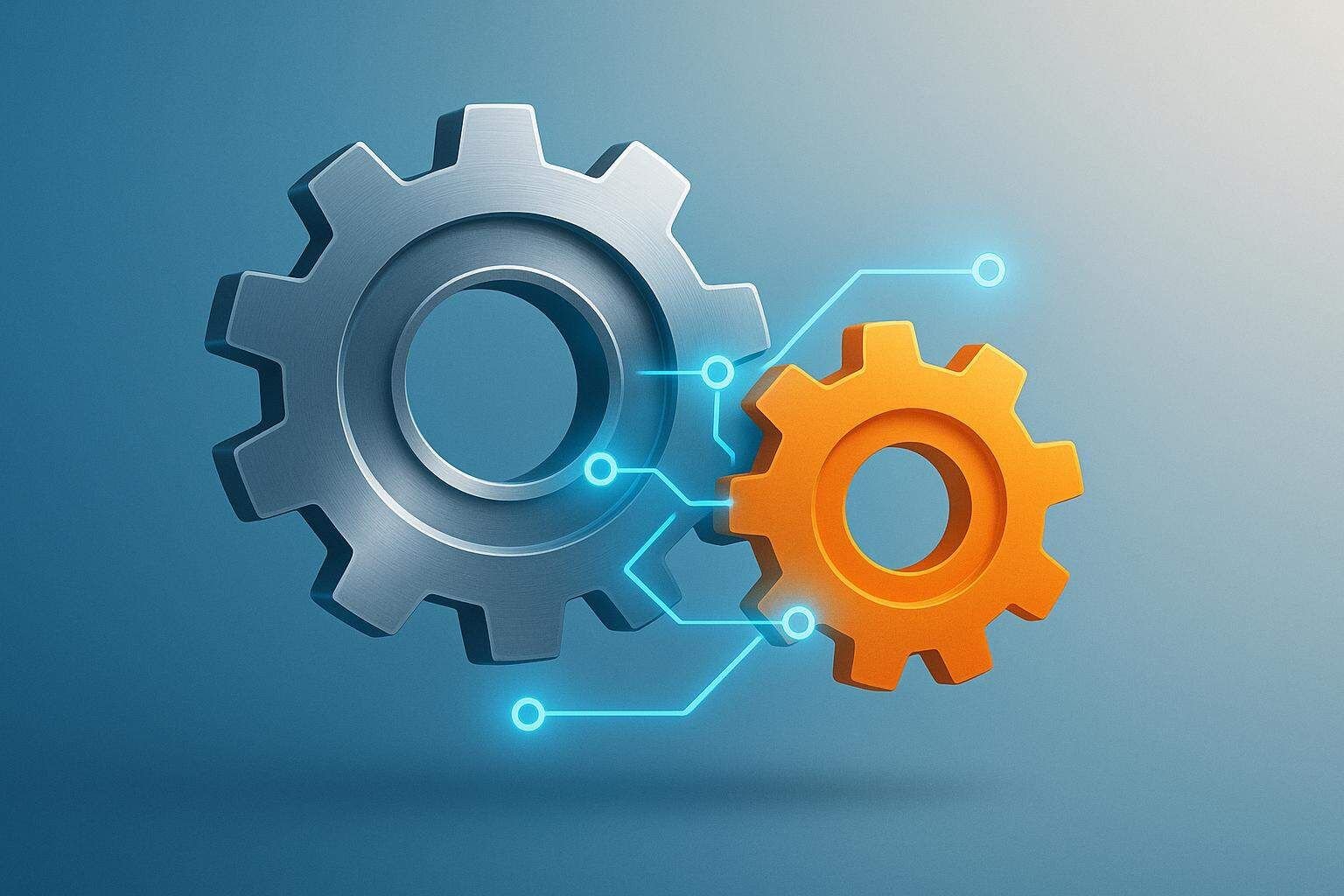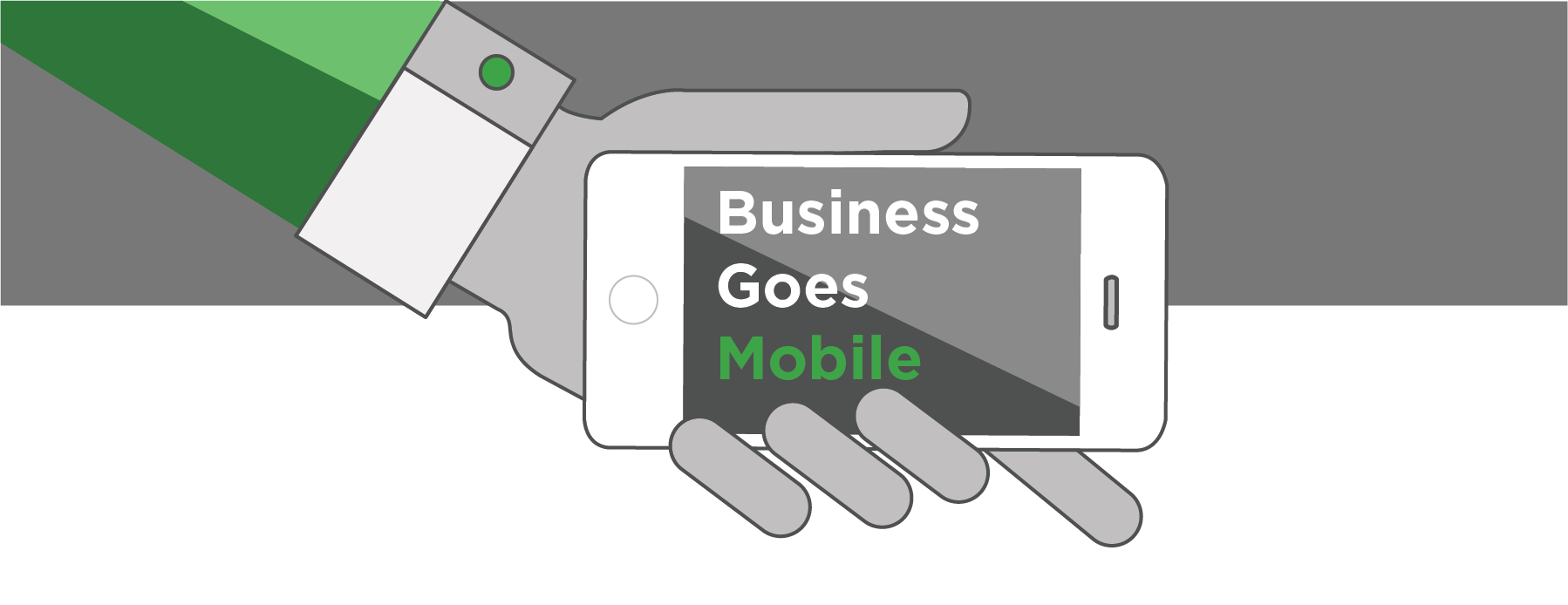
Mobile isn’t the future. It’s now. Are you ready?
Enterprise mobility, broadly stated, is the comprehensive use of mobile computing technologies in business to create new value and drive greater efficiency in communication, information access, and operations. It is transformative, enabling new business models like the sharing or access economies of companies like Uber, Airbnb and ZipCar. It increases situational awareness and better real-time decision making for field operations at manufacturing plants. It also improves responsiveness, driving customer engagement in the sales process.
And, as the GSMA Intelligence Mobile Economy 2015 report puts it, “Mobile technology has transformed the way in which economic activity is carried out in virtually all the sectors of the global economy.”
This transformation of the global economy has only just begun. In 2014, mobile technology contributed about $3 trillion to global GDP. By 2020, it’s estimated that that impact will rise to $4 trillion. Productivity-related contributions to GDP are estimated at $1.7 trillion. Many of our clients are seeing the impact of mobile technologies on their businesses: some are facing new pressures from mobile technology-based competitors, and others from existing competitors who have been able to more quickly leverage mobile technology. We are seeing a rapid increase of market interest in streamlining field operations, increasing customer engagement, creating value, and providing real-time data whenever and wherever it is needed.
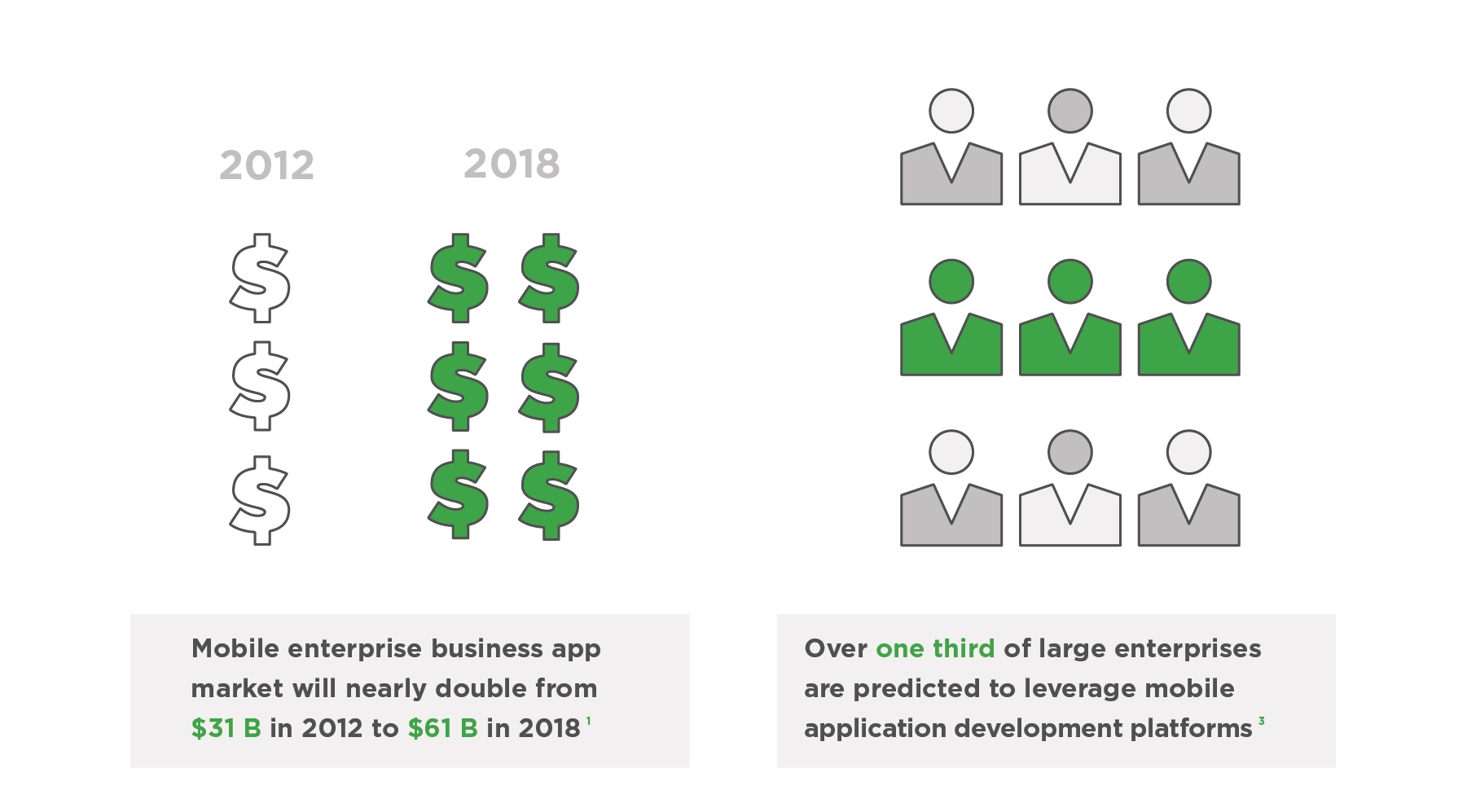
So what’s driving enterprise mobility adoption? Two of the major factors are the very scale and nature of mobile computing.
Mobile represents an entirely new computing platform, with a global scale never before seen. The Mobile Economy 2015 report estimates global smartphone adoption will increase by 2.9 billion devices over the next five years alone; in fact, there are four times as many phones sold per quarter as desktop PCs. Over those same next five years, 70% of those devices will be connected to a broadband network. This massive scale, as you may imagine, has significantly lowered the cost to create new business value, disrupt existing businesses, and leverage technical innovation within an organization.
Also driving adoption is the nature of mobile computing, especially when compared to prior technology platforms like the desktop PC. Mobile phones are personal, always-near devices and are location and context aware. They have a rich array of environmental sensors, including barometers, magnetometers, light sensors, proximity sensors, fingerprint sensors, pedometers, heart rate monitors, and cameras – each of which can create entirely new business opportunities. Mobile devices also typically have a shorter lifespan and are upgraded more often, leading to a more quickly advancing computing platform. The sensor data, combined with customer and product information in data repositories, creates a new capability for better analysis and quicker decision-making – leading to increases in quality and decreases in cost.
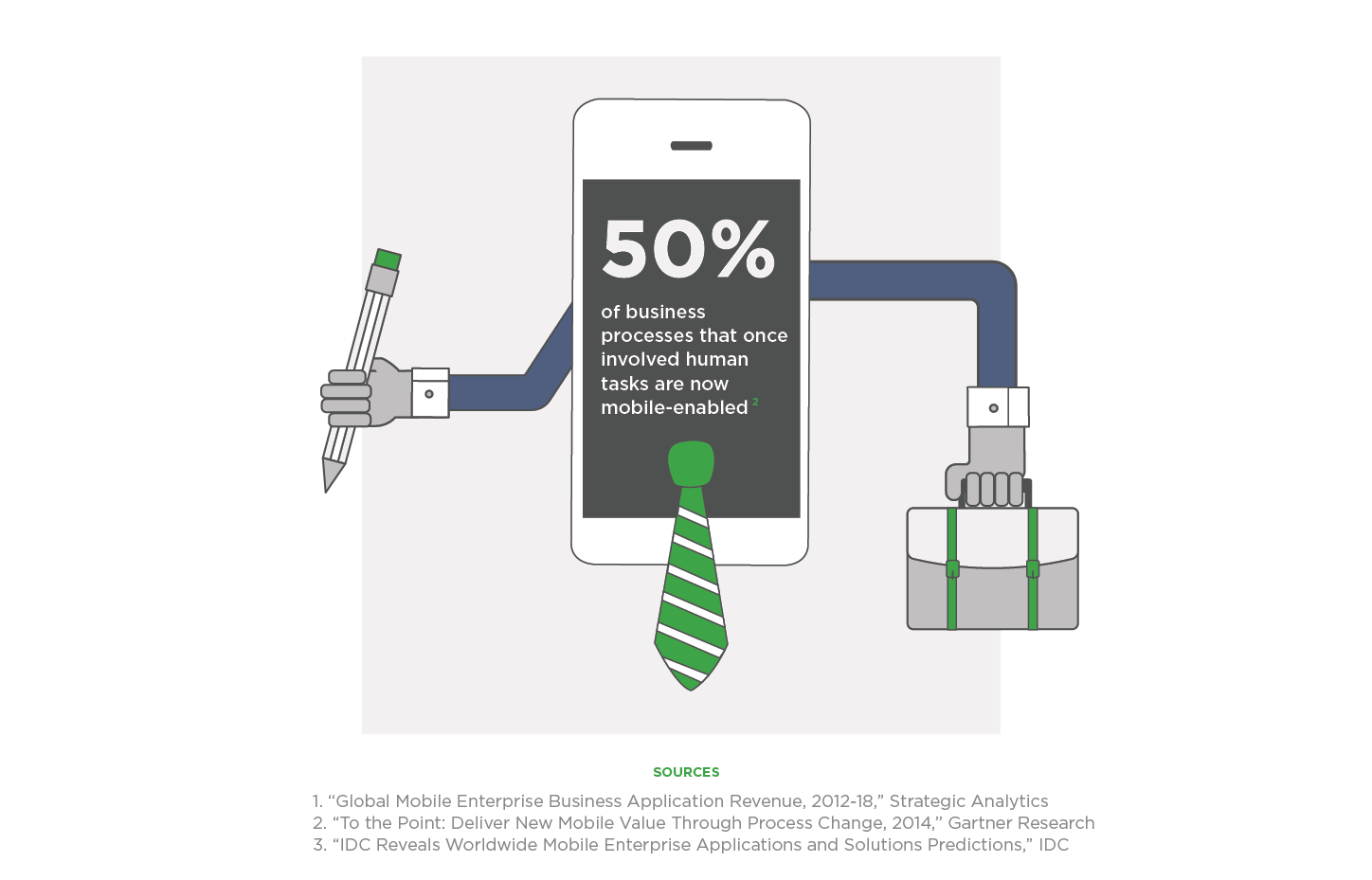
Mobile is transforming whole segments of business every day, creating business value with just a fraction of the resources previously required. Every business leader needs to understand this tsunami and figure out how to harness its potential. As with any game-changing innovation, however, there are major challenges, and we’ll talk about some of those in part 2 of this blog. Stay tuned!
Like the illustrations? That’s our amazing summer intern Ashley Profozich.






